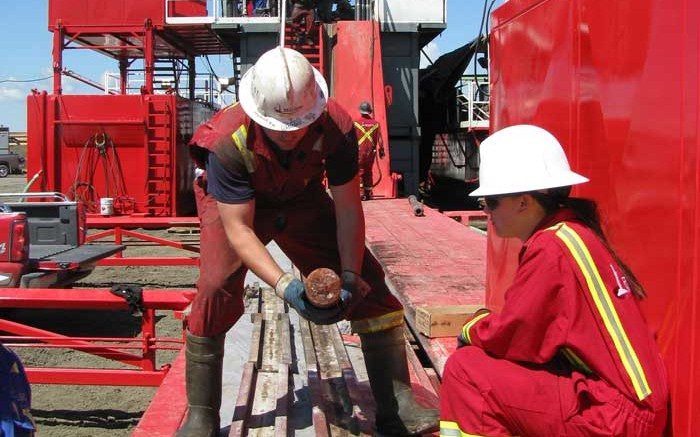China-based private equity firm Beijing Tairui Innovation Capital Management has decided to invest $80 million for a 51% stake in Western Potash (TSX: WPX) after the junior unveiled a less expensive mine plan for its Milestone potash project in southern Saskatchewan, about 30 km southeast of Regina.
Western Potash announced July 2 that it has completed a scoping study for selective mining at Milestone that would start on a smaller scale using horizontally drilled caverns and cost a mere $80 million to build instead of the $3 billion outlined in a December 2012 feasibility study.
Under the old mine plan envisioned in the feasibility study, Milestone was to be operated as a conventional potash solution mine like Mosaic’s (NYSE: MOS) Belle Plaine mine, about 80 km to the north and one of the world’s largest producing potash solution mines.
Under the new plan, selective mining would rely on horizontally drilled wells similar to the method used at Intrepid Potash’s (NYSE: IPI) Moab deposit in Utah. The process involves horizontally drilled wells through which the miner injects a sodium chloride (NaCl) saturated brine that is hotter than the in-situ rock formation. The potassium chloride (KCl) is then selectively dissolved within the potash formation, leaving a lattice of NaCl behind.
The potassium chloride-rich brines are then brought to the surface through each production well, and then sent to a crystallization facility at surface.
The plan is to start small with just three wells targeting Milestone’s Esterhazy zone, outlined in the most recent scoping study. A big benefit of the method is that the NaCl is not brought to surface in any great quantities.
“You’re not bringing a pile of salt (NaCl) to surface where you need a huge industrial complex to get rid of the salt and process the potash so it simplifies the process,” says Patricio Varas, the company’s president and chief executive officer, adding that there are no markets for NaCl in Saskatchewan, which is why there are huge piles of it at most of the potash operations in the province.
“This process hasn’t been done here in Canada, but there is no reason why it wouldn’t work here, and it could even work better,” he says. Varas explains that at Intrepid Potash’s Moab mine, for instance, which has been operating now for about a decade, the beds are thinner, more structurally complex, and the ore is faulted. In Saskatchewan, by contrast, the beds are generally flat and much thicker. Milestone’s beds are 5 to 6 metres thick, he says, and the deposit has good grade and “great temperatures.”
Western Potash’s pilot study, released earlier this month, envisions the simultaneous operation of three pilot production caverns and the project is estimated to produce 146,000 tonnes per year at an operating cost of $80 per tonne (excluding logistics and royalties).
The mine life is estimated at 12 years with an after-tax and after-royalties internal rate of return of 25.2% and an after-tax and royalties net present value of $56.7 million.
“We have to do what the market will bear,” Varas says in answer to a question about whether he would have preferred to stick with the initial operating plan. “The market is just not interested in big capex projects, and it doesn’t matter whether you’re a big company or a smaller one. Even the big companies like Rio Tinto and BHP are shying away from the big projects.”
As for the new Chinese investor, Varas says it clearly saw Western Potash as a bargain. “They’ve done a number of deals that are more in the electric power sector, but they saw us as a great opportunity and an undervalued opportunity and of course China is a big market for potash and the potash market is also growing in Southeast Asia.”
Varas adds that Beijing Tairui is seeking a dual listing in Hong Kong and in China, and that this deal will bring the firm a step closer to that goal by meeting some of the listing requirements of the Hong Kong Stock Exchange, which he says include having revenues and being in production within two years.
Beijing Tairui isn’t the first Chinese company to invest in Western Potash. In June 2013, China BlueChemical and Benewood Holdings Corp., through a joint-venture company called CBC (Canada) Holding Corp., acquired 45 million newly issued common shares at a price of 71¢ per share for proceeds of $32 million, taking a 19.9% stake in the company.
Under Western Potash’s latest deal, Beijing Tairui is acquiring about 249 million shares at a price of 32¢ per share for its 51% stake.
“CBC Holdings has a right to maintain their interest,” Varas says. “They are aware of this transaction because one of their people is on our board, so now they have to let us know whether they want to participate or to what level they want to participate.
“In these markets, even for CBC Holdings, a $3-billion project is a big bite, so if we can get working and get this into construction I think they’ll be thrilled, and the off-take is really what they’re after.”


Be the first to comment on "Western Potash’s redesign attracts $80M Chinese investment"